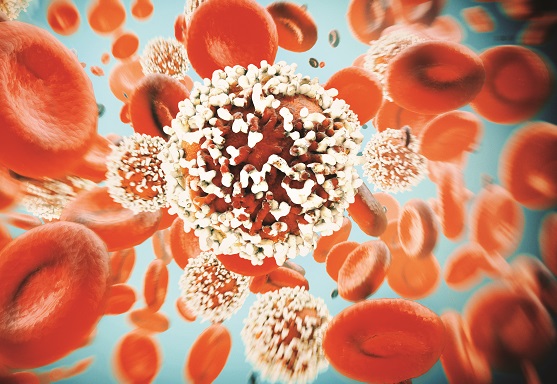
When a cancer diagnosis was given in the 1960s, it spelt grief and foreboding. To many, it was a death sentence. Even among survivors, there is always the persistent fear and anxiety that the cancer would return. However, that has all changed. With better understanding, more accurate detection and treatment options available today, there is hope when one is fighting against the disease. In conjunction with World Cancer Day on 4 February 2017 and Colorectal Awareness Month, we take a look at the disease and how we can fight it to survive.
A LOOK AT CANCER
Cancer is a blanket term for over 100 different diseases characterised by abnormal cell growth. It happens when cells divide in an uncontrollable manner, becoming a mass of tissue that disrupts normal body functions. They are often classified into two types, benign or malignant. Benign ones do not spread and are seen as more harmless than malignant ones that will migrate to other parts of the body, forming more tumours.
Despite often being attributed to current lifestyles and called a modern man’s disease, cancer has plagued us for centuries. The first documented case came from ancient Egypt. In fact, ancient surgeons understood its nature, knowing many would grow again even after being surgically removed.
There are many causes for cancer. Starting from the early 20th century, more than 100 carcinogens (cancercausing agents) have been identified. This includes viruses such as Hepatitis B and C; inheritable faulty cancer genes; and contacts with chemicals like nicotine or exposures like ultraviolet light. They can promote cellular and genetic mutations, leading to cancerous growth.
One such example is lymphoma, a cancer of the white blood cell. According to Dr Kevin Tay, a consultant medical oncologist, “Lymphoma tends to arise in lymphoid organs like the lymph nodes, spleen and bone marrow but it can also be found in less-common places like the thyroid gland.”
People with Hashimoto’s Thyroiditis, an autoimmune disease where the immune system attacks the thyroid, will see a 60-fold increase in thyroid lymphoma risk. “Even with surgery, radioactive iodine and thyroid-stimulating hormone suppression, thyroid cancer can still come back even after many years later,” added Dr Goh Kian Peng, a senior endocrine consultant. From this example, we can see how the erratic nature of cancerous development and how other diseases contribute to a person’s risk profile.
CANCER IN SINGAPORE
Every day, 37 people are diagnosed with cancer, and 16 die from it. The situation is chilling, especially when the figures revealed by the National Registry of Diseases have shown a sharp rise in the number of diagnoses. As a result, cancer remains the top cause of death in Singapore.
How do cancer patterns differ between here and in countries abroad, such as regional Asian countries? The specialists from OncoCare Cancer Centre in Mount Alvernia Hospital cited an example based on a report that there are more smokers in regional Asian countries as compared to Singapore. Among lung cancer patients, they tend to find more cases of squamous cell carcinoma and small cell carcinoma as compared to non-smoker lung cancer, which is adenocarcinoma.
But according to the Singapore Cancer Society the lung cancer rate is still lower than that of colorectal cancer for men, making the latter the second most common form of cancer. For women, breast cancer takes the top spot but colorectal cancer trails right behind. The same specialists from OncoCare Cancer Centre reveal just between 2009 and 2013 alone, “close to 9000 new cases emerged”, with the highest incidence among ethnic Chinese, as compared to Malays and Indians.
As the risks for cancer are influenced by our habits, lifestyles and genes, it is unsurprising cancer rates differ across ethnic groups. In the case of colorectal cancer, a common type in Singapore, this also means we can keep it in check through healthier and mindful living. 90% of colorectal cancers occur in people older than 50, making it a cancer of primarily environmental carcinogens – in other words, the foods we eat and the lifestyle we lead.
The fact it has traditionally been associated with a diet high in red and processed meat and low in food rich in fibres and antioxidants such as fruits means it is largely preventable. By engaging in regular physical activity, consuming fruits and vegetables and maintaining your weight within a healthy range, you can sharply reduce your chance of cancer.
As colorectal cancers often start off as polyps, which are small clumps of cells that can develop into colon cancer, regular screening can make the difference in cancer prevention. This is because polyps can be easily removed in a regular examination to check for any cancerous development. Dr Thomas Soh, a consultant medical oncologist, advocates that the general population above the age of 50 should go for regular screening colonoscopy or stool occult blood testing to ensure early detection.
Article contributed by Dr Kevin Tay and Dr Goh Kian Peng, accredited doctors of Mount Alvernia Hospital. It is also Part 1 of a 2-part series. Click here to read part 2 of the series.
This article is taken from our My Alvernia Magazine Issue #29. Click here to read the issue on our website or on Magzter.